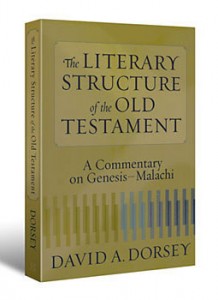Oct
25
2009
“Wisdom and virtue are not found in mastering desire, but in the maturing of desire.”
From Peter Leithart yesterday:
 Carey Ellen Walsh (Exquisite Desire
Carey Ellen Walsh (Exquisite Desire ) points to the difference between classical responses to desire and the account of desire in the Song of Songs. Using Odysseus and the Sirens as an illustration, she notes how this scene reveals the Greek instinct that desire “harbors danger by rendering its victim under its spell.” To counter desire, one needed to exercise rational management and control: “The Greek philosophical tradition placed desire under the care of rationality. Hence, Odysseus did just what desire calls for; he bested emotion with a reasoned plan. Under this classical influence, Foucault argues, desire became for the West largely something to manage, dominate, and even defeat.” Sexual desire needed to be controlled, and that control is what makes someone virtuous.
) points to the difference between classical responses to desire and the account of desire in the Song of Songs. Using Odysseus and the Sirens as an illustration, she notes how this scene reveals the Greek instinct that desire “harbors danger by rendering its victim under its spell.” To counter desire, one needed to exercise rational management and control: “The Greek philosophical tradition placed desire under the care of rationality. Hence, Odysseus did just what desire calls for; he bested emotion with a reasoned plan. Under this classical influence, Foucault argues, desire became for the West largely something to manage, dominate, and even defeat.” Sexual desire needed to be controlled, and that control is what makes someone virtuous.
Continue reading
Comments Off | tags: Peter Leithart, Song of Songs | posted in Christian Life, Quotes
Apr
15
2009
 “I began writing this book some ten years ago, although my interest in Hebrew literary structure goes back a decade before that. My fascination with the subject was kindled when I began teaching Old Testament courses in seminary. At that time I was struck by the apparent lack of order within many of the biblical books. Jeremiah seemed hopelessly confused in its organisation; so did Isaiah and Hosea and most of the prophets. Song of Songs and Ecclesiastes appeared to be in almost complete disarray, and even the more orderly historical books, such as Joshua and Kings, showed signs of strangely careless organisation. Why did the biblical authors write like this? I would never write a book, an article, or even a private letter with such carelessness of arrangement.
“I began writing this book some ten years ago, although my interest in Hebrew literary structure goes back a decade before that. My fascination with the subject was kindled when I began teaching Old Testament courses in seminary. At that time I was struck by the apparent lack of order within many of the biblical books. Jeremiah seemed hopelessly confused in its organisation; so did Isaiah and Hosea and most of the prophets. Song of Songs and Ecclesiastes appeared to be in almost complete disarray, and even the more orderly historical books, such as Joshua and Kings, showed signs of strangely careless organisation. Why did the biblical authors write like this? I would never write a book, an article, or even a private letter with such carelessness of arrangement.
I was intrigued by the possibility that the Hebrew authors might have organised their compositions according to literary conventions that were different from ours. I began to discover, over a period of years, that several structuring patterns rarely used by us were remarkably common in the books of the Hebrew Bible, particularly chiasmus (symmetry), parallelism, and sevenfold patterns. I was increasingly struck by how often these patterns had been utilised to arrange biblical books…
It was my mother who gave me a love for literature. She read to my brother Stephen and me regularly, from as early as I can remember. I still have many fond memories of those wondrous bedtime stories, whose structures — like the Bible — were designed for the ear, not the eye.”
David A. Dorsey, The Literary Structure of the Old Testament, p.9-10 (Preface).
Comments Off | tags: Chiasm, David A. Dorsey, Ecclesiastes, Hebrew, Isaiah, Jeremiah, Literary Structure, Old Testament, Song of Songs | posted in Quotes
 Carey Ellen Walsh (Exquisite Desire
Carey Ellen Walsh (Exquisite Desire) points to the difference between classical responses to desire and the account of desire in the Song of Songs. Using Odysseus and the Sirens as an illustration, she notes how this scene reveals the Greek instinct that desire “harbors danger by rendering its victim under its spell.” To counter desire, one needed to exercise rational management and control: “The Greek philosophical tradition placed desire under the care of rationality. Hence, Odysseus did just what desire calls for; he bested emotion with a reasoned plan. Under this classical influence, Foucault argues, desire became for the West largely something to manage, dominate, and even defeat.” Sexual desire needed to be controlled, and that control is what makes someone virtuous.


























